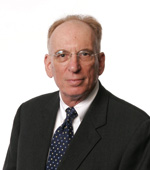The Bloomberg administration will be remembered for, among other initiatives, a major reallocation of public street space for new and innovative uses. Cars and trucks have been joined by a host of new users, most recently by the long anticipated bike share program. Citibike is a worthy experiment.
The City’s Department of Transportation chased vehicular traffic from portions of Times Square, Herald Square and Madison Square and rededicated the space to movable chairs, tables and planters. Formerly clogged streets now serve as parks for sitters, walkers, lunch time breaks and urban star gazing. Along First Avenue, Second Avenue and other thoroughfares, DOT has seized entire lanes and pushed the parking lane away from the curb and out into the street. It then dedicated the former parking lanes to bicycles. These two shifts – pavement parks and protected bike lanes – constitute the largest shift of street space away from motorized vehicles since New York City started paving streets with asphalt.
Most recently, in May 2013, DOT allocated more dedicated street space for bicycles. Lengthy bike docks now occupy former parking lanes near many popular destinations in Manhattan and Brooklyn. On blocks where alternate side of the street parking was once available, DOT has removed five or more car spaces and installed a bike dock. But drivers can not complain too much. Street space for free on-street-parking doubled in recent years when the City limited alternate side parking to only four days a week and for only a couple of hours a day.
Cars and trucks compete for street space with movie shoots, street fairs, parades, and the unpredictable street travel by skate boards, push carts, scooters, pedicabs and even motorized wheel chairs. Intercity buses now use sidewalks and curb lanes as bus terminals.
Streets are competitive environments with DOT the final space arbitrator. Each claimant for priority makes a persuasive case for its own preeminence. Now it is bikers who argue that motorists have to adjust. Mayor Bloomberg has the correct idea about Citibike. It is a free market experiment. Use will enhance its value. If use does not justify the dedication of space, there are plenty of other street users who are ready to reclaim the space.
Ross Sandler



As a pedestrian, this developments raises some concerns for me. My experience with NYC bike riders is that they ignore traffic signals, pedestrian cross-walks, one-way street indications. I have suffered quite a few near-miss accidents as a pedestrian with bicycle riders who were in violation of traffic rules. We require operators of motor vehicles (cars, trucks, motorcycles) to have licenses, acquired after passing tests on traffic rules and rudimentary driving skills tests. We pose no such requirements for bike riders. We will now add thousands of additional bike riders to our streets. Will pedestrian casualties go up?
Thank you for your comment. You bring up a interesting concern. I would love to hear what others have to say about this program as well.
As a long time biker in NYC, I understand the concerns of pedestrians. However, I think with more bikers on the road the situation will become better, not worse. I think the major safety issue for pedestrians is awareness of bikers. NYC pedestrians often walk in the street – regardless of whether they are in a cross walk or have a walk signal. NYCers glance up the street and if they don’t see a car, they simply walk. As more bikers take to the streets, pedestrians will begin to see bikers. At the same time, as more bikers take the streets there will be greater pressure to bikers to follow the rules of the road. This too will promote safety as bikers begin to act more like the vehicles that they are, and less like pedestrians on wheels (that means no riding on the side walks, no running of red lights, and not going the wrong way down one way streets).